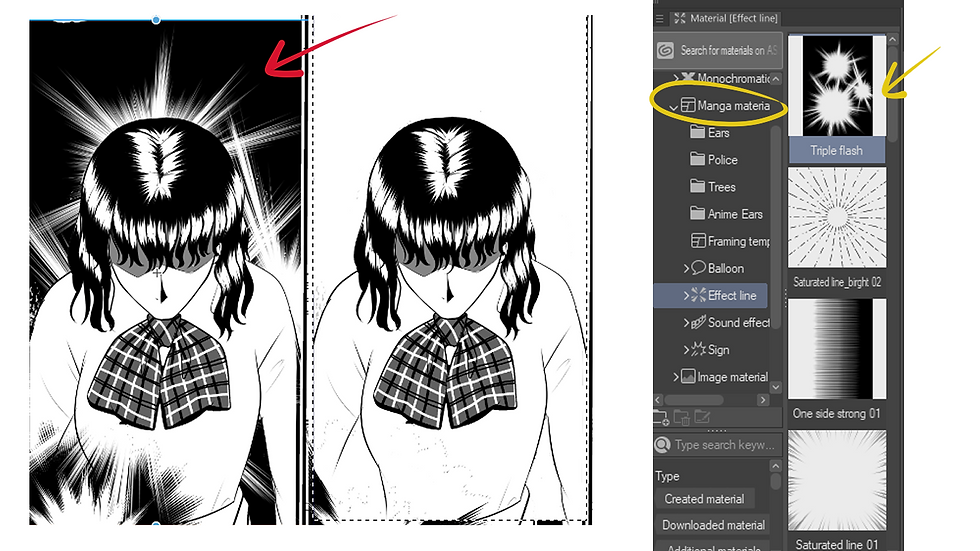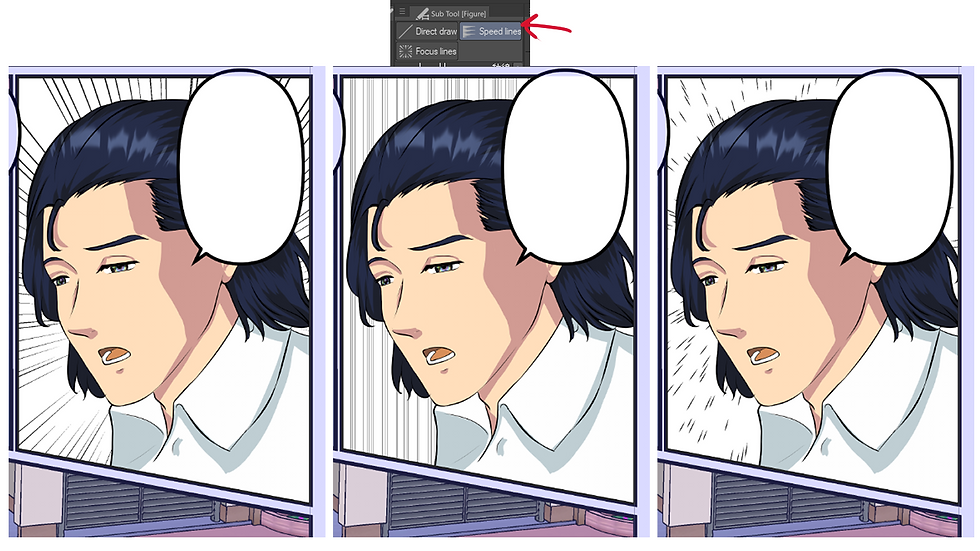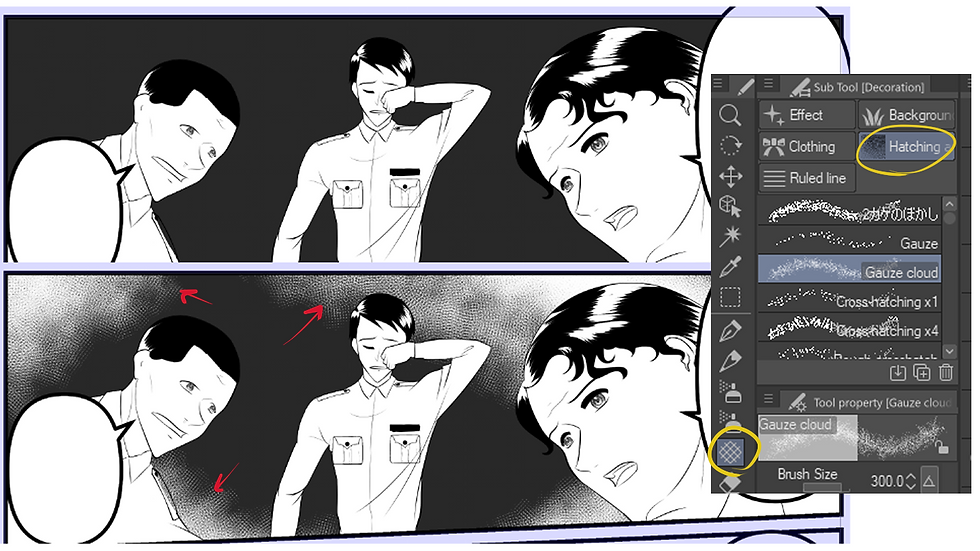Manga Backgrounds for the Emotions Your Scenes Need
- Samar

- Jul 15
- 3 min read
In this blog post, I’d love to share with you how to add manga backgrounds for emotions, because we all know how important backgrounds are in conveying the right feeling in a scene. Sometimes, we draw the character’s facial expression perfectly, but without the right background, the emotion just doesn’t land the way we want. Whether you're trying to show sadness, tension, joy, or anger, there’s always a background that can enhance that emotion and give the scene its real impact.
In today’s tutorial, I’ll show you four different ways to add manga backgrounds for emotions, using built-in tools from software—or even doing it by hand for those of you who love to get creative manually.
Method One: Classic Manga Backgrounds
This is the most traditional and probably the easiest method used in manga:
Open Clip Studio Paint.
Go to the Material Library via: Window > Material > Manga Backgrounds from the side panel.

Choose a background that fits your scene (sadness, tension, shock, etc.), and drag it directly onto your canvas.
Place the background in a layer below the characters.
Use the Operation > Object tool to resize or move the background left and right as needed.
Just like that, you’ve added a background that reflects the character’s emotions quickly and effectively.
Method Two: Action and Emotion Lines
Perfect for scenes involving anger, surprise, high speed, or combat:
From the side panel, go to the Direction section, then select Speed Lines.
Set the line size using the size options provided.
Choose the appropriate effect from the collection of line styles.
Add a new layer, then draw the effect across the canvas. It’ll appear as fast-moving lines that give the scene a sense of motion or tension.
This method adds impact and energy to your scene, and it's commonly used in moments of attack or shock.
Method Three: Colored Backgrounds for Webtoons
If you're working on a webtoon and want more modern, colorful backgrounds, here’s a great option:
Go to the Color Pattern section, then to Effect and Pattern Backgrounds.
Choose an effect like Mist Yellow, or any one that suits your scene’s emotion.
Drag the background to your canvas and place it in a layer below your characters.
You’ll find a wide range of ready-made backgrounds that express joy, sadness, dreaminess, mystery, and more.
These manga backgrounds for emotions are especially powerful when used correctly.
Method Four: Hand-Drawn Textures and Effects
This one’s for those of you who like to add your personal touch with manual drawing:
Add a new layer and fill it with a dark base color.
Choose Sub Tool: Decoration, then go to Hatching.
Pick a brush from the list and change its color to white.
Draw manually in the areas you want to emphasize—like behind the head, around the body, or along the edges of the panel.
This gives a raw, emotional feel to your art—very similar to what we see in hand-drawn manga.
So today, we’ve learned how to add emotion-driven backgrounds and expressive effects to our manga scenes. Every background, when used at the right time, enhances the emotional depth of the scene and helps the reader connect with the character’s feelings. Don’t underestimate the power of a background—sometimes it says more than the dialogue.
I hope you found this tutorial helpful, and I’ll see you in future lessons, God willing. Keep experimenting and stay creative—every scene has a feeling, and every feeling deserves a background.
















Comments